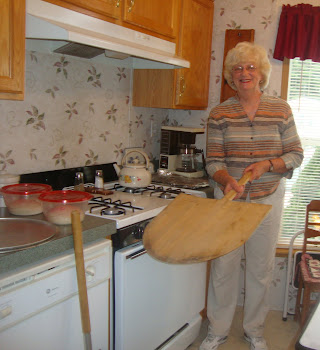Professor Calvel was the father of the autolyse method and also gave it its name. The autolyse method should only include flour and water and possibly a natural leavain.
Professor Calvel is best know for his coming up with the concept of autolysis (autolyse).
In his book, The Taste of Bread, according to Professor Raymond Calvel, it is the combined effects of increased mixing speed and cumulative mixing time that brings on the phenomenon of dough oxidation. You need both. If the mixing speed is high, but th mixing time is short, the length of the time that the dough is in contact with atmospheric oxygen is short, so the oxidation for dough can be minimal or nonexistent.
Professor Calvel noted that a high level of oxidation is achieved whenever:
1) intensive mixing methods are used,
2) bean flour or other oxidizing additives are present,
3) salt addition is delayed until late in the mixing process, and
4) a large portion of the dough is continually in contact with atmospheric oxygen
Professor Calvel believed that the practices above resulted in an artificial maturation of the dough. Professor Calvel didn’t like the French bakers that used those methods.
Negative side effects of such practices included a bleaching of the dough and destruction of carotenoids, with a resulting bleaching of the crumb and a "lessening and general deterioration of the taste of the bread." Prof. Calvel noted that the "delicate flavors of the flour's caretenoid pigments are lost through oxidation." Elsewhere, he described the carotenoids as "flavor carriers". So, clearly, he did not favor overoxidation of the dough.
Professor Calvel also discussed the relationship between pH, residual sugar and oven spring. These are the important quotes from his book: in the final analysis the pH is related to the level of residual sugars present in the patons just before baking. These residual sugars are the remainder of those that fed dough fermentation, and they fulfill important functions during the baking process. The level at which they are present plays an important role in determining the extent of oven spring during the first moments of baking. They also contribute to the Maillard reaction and caramelization phenomenon that produce crust coloration.
The durations of the autolysis (autolyse) given in the dough formulations run from about 13-30 minutes, depending on the particular dough formulation. This however, that this range is for dough batches of up to about 75 pounds, not for any amount of dough.
To allow the dough to oxidize, even at the expense of damaging carotenoids. This was a practice that was used by French bakers starting in about 1958-1960 and that Prof. Calvel found reprehensible.
The Calvel autolyse was developed for use in breadmaking, but I believe as others do that the autolyse can also be used in pizza making.
Some people will put the yeast in with the flour and water, on the theory that it will not activate and start to do its job during the period of the autolyse. Originally, the yeast was left out of the autolyse to prevent it from acidifying the dough. If the dough temperature is kept on the cool side, it probably will be okay to add the yeast to the water and flour during the autolyse.
But, even with the croissant dough, the yeast and salt (and ascorbic acid) are added after the autolyse rest period.
I have tried several experiments so far using Professor Calvel’s method, but right now I don’t have any conclusions.
Norma
This is a blog about my learning knowledge to make pizza. I have been helped by many people on my journey
Welcome...
There are so many variables that go into making a PIZZA. The hydration of the dough, flour, yeast and many more.. Amounts of any kind of yeast in a pizza can make a big difference. Most recipes posted on the web, use too much yeast in their recipes. What I have found out so far, is either bulk fermenting the dough or cold fermenting the dough will give a better flavor in the crust. I am still experimenting to find different flavors in the crust of pies. In my opinion pizza is all about the best flavor you can achieve in a crust. I still am on the journey about flavors in the crust. Even differences in temperatures in you home or times of the year can influence how much yeast to use. If you want a pizza to develop flavors in the crust, there are many ways to go about achieving this.
Adventure in Pizza Making
There are many ways to go about trying to make any kind of pizzas you want to create. PIZZA making is fun and also you get to eat your finished product. I learned to make all my pizza on http://www.pizzamaking.com/forum/index.php
If you look on pizzamaking.com you can see all the beautiful creations of pizzas members make on this site. Members and moderators help members and guests achieve almost any kind of pizzas they want to create. Since joining this site, my pizza making skills have gone from non-existent to something much better. I invite you to take a look at this site.
Total Pageviews
Subscribe to:
Post Comments (Atom)




No comments:
Post a Comment